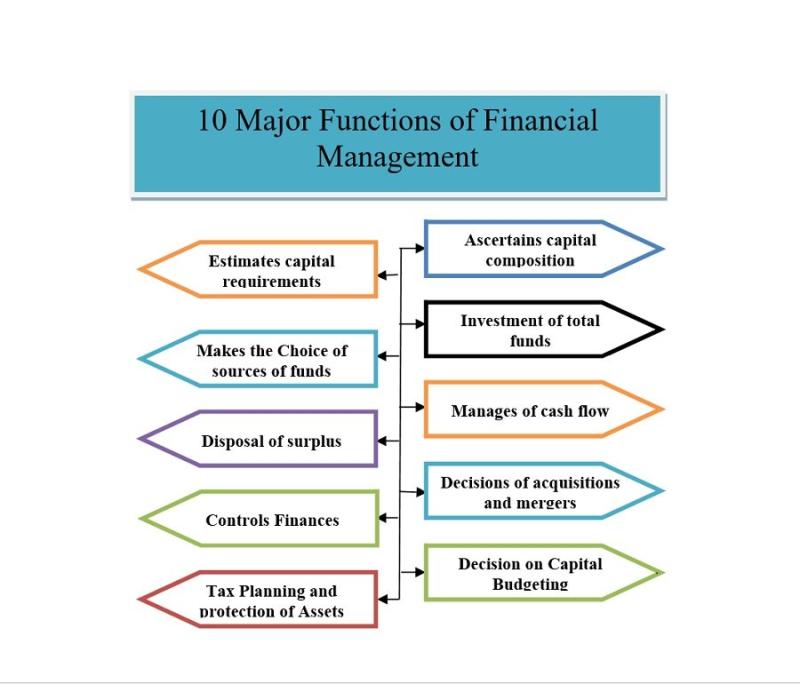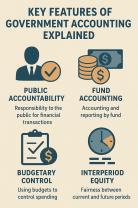What are key decisions of financial management?
Financial management involves making a range of decisions to ensure the financial health and success of an organization. These decisions can be broadly categorized into three key areas: financing decisions, investment decisions, and operational decisions. Here are some key decisions within each category:
1. Financing Decisions:
Capital Structure Decision:
- Determining the mix of equity and debt financing that the organization will use to fund its operations and investments.
Debt vs. Equity Financing:
- Choosing between raising capital through borrowing (debt financing) or issuing shares (equity financing) to meet financial needs.
Dividend Policy:
- Deciding on the distribution of profits to shareholders through dividends. This involves balancing the interests of shareholders and the need for reinvesting in the business.
Working Capital Management:
- Managing short-term assets and liabilities to ensure the organization has enough liquidity to meet its day-to-day operational needs.
Credit Policy:
- Establishing credit terms for customers, determining credit limits, and managing accounts receivable to optimize cash flow.
2. Investment Decisions:
Capital Budgeting:
- Evaluating and selecting long-term investment projects that align with the organization's strategic goals. This includes assessing the profitability and feasibility of investment opportunities.
Project Prioritization:
- Ranking and selecting projects based on their potential return on investment, risk, and alignment with the organization's objectives.
Asset Management:
- Efficiently managing and optimizing the use of assets to maximize returns and minimize costs.
Portfolio Management:
- Balancing the organization's investment portfolio by diversifying assets and managing risk exposure.
Mergers and Acquisitions (M&A):
- Assessing and making decisions regarding potential mergers, acquisitions, or divestitures to enhance the organization's strategic position.
3. Operational Decisions:
Budgeting:
- Creating budgets to allocate resources effectively, plan for expenses, and monitor financial performance against targets.
Cost Control:
- Implementing strategies to manage and control costs to improve profitability and operational efficiency.
Financial Reporting:
- Ensuring accurate and timely financial reporting for internal management, stakeholders, and regulatory compliance.
Risk Management:
- Identifying, assessing, and managing financial risks to protect the organization from potential threats.
Cash Flow Management:
- Monitoring and managing cash inflows and outflows to ensure the organization has adequate liquidity to meet its obligations.
Credit Control:
- Implementing policies and procedures to control credit risk and ensure the organization is paid in a timely manner.
The effectiveness of financial management is often measured by the organization's ability to balance these key decisions in a way that maximizes shareholder value, ensures financial sustainability, and supports strategic objectives. Each decision requires careful analysis, consideration of risk, and alignment with the organization's overall financial strategy.
The Pillars of Financial Power: Navigating Key Decisions in Financial Management
Building a secure and fulfilling financial future requires navigating a series of crucial decisions. These choices affect how you budget, invest, save, and ultimately achieve your financial goals. Let's dive into the essentials of effective financial management and the critical factors for successful decision-making:
1. Key Decisions in Financial Management:
- Goal Setting: Defining your short and long-term financial aspirations, like buying a house, retiring early, or starting a business, provides a roadmap for your finances.
- Budgeting and Cash Flow Management: Creating a realistic budget and tracking your income and expenses ensures you live within your means and avoid unnecessary debt.
- Risk Management: Protecting yourself from unforeseen events like illness or job loss through insurance and emergency funds provides peace of mind and financial stability.
- Debt Management: Developing a strategy to pay off existing debt and minimize future borrowing promotes financial freedom and avoids the burden of high interest rates.
- Investing: Allocating a portion of your income towards diversified investments in stocks, bonds, or real estate allows your money to grow over time and generate passive income.
- Retirement Planning: Ensuring enough funds for a comfortable retirement through contributions to retirement accounts like IRAs or employer-sponsored plans is crucial for long-term financial security.
Essential Choices in Effective Financial Management Practices:
- Prioritization: Distinguish between needs and wants, prioritize essential expenses, and avoid impulsive spending to live within your budget.
- Automated Systems: Set up automatic transfers to savings and investment accounts to build wealth consistently without relying on willpower.
- Knowledge is Power: Continuously educate yourself on financial concepts, tools, and strategies to make informed decisions.
- Seek Professional Guidance: Consulting a financial advisor can provide personalized advice and a tailored financial plan based on your individual needs and goals.
- Regular Review and Adjustments: Regularly evaluate your budget, investments, and debt levels to ensure your financial plan remains aligned with your evolving goals and circumstances.
Decision-Making in Finance: Critical Factors for Success:
- Emotional Control: Avoid basing financial decisions on emotions like fear or excitement. Instead, rely on logic, research, and long-term planning.
- Risk Tolerance: Assess your risk tolerance and choose investments with an appropriate level of risk aligned with your goals and time horizon.
- Diversification: Spreading your investments across different asset classes and sectors mitigates risk and protects your overall portfolio from market fluctuations.
- Long-Term Perspective: Focus on the long-term benefits of your financial decisions rather than short-term gains.
- Discipline and Consistency: Sticking to your budget, following your investment plan, and contributing to savings and retirement accounts consistently are key to achieving financial success.
Remember, there's no one-size-fits-all approach to financial management. The most important factors are personal responsibility, informed decision-making, and a commitment to building a secure and fulfilling financial future. By understanding the key decisions, essential choices, and critical factors for success, you can navigate the world of finance with confidence and build a solid foundation for financial prosperity.












